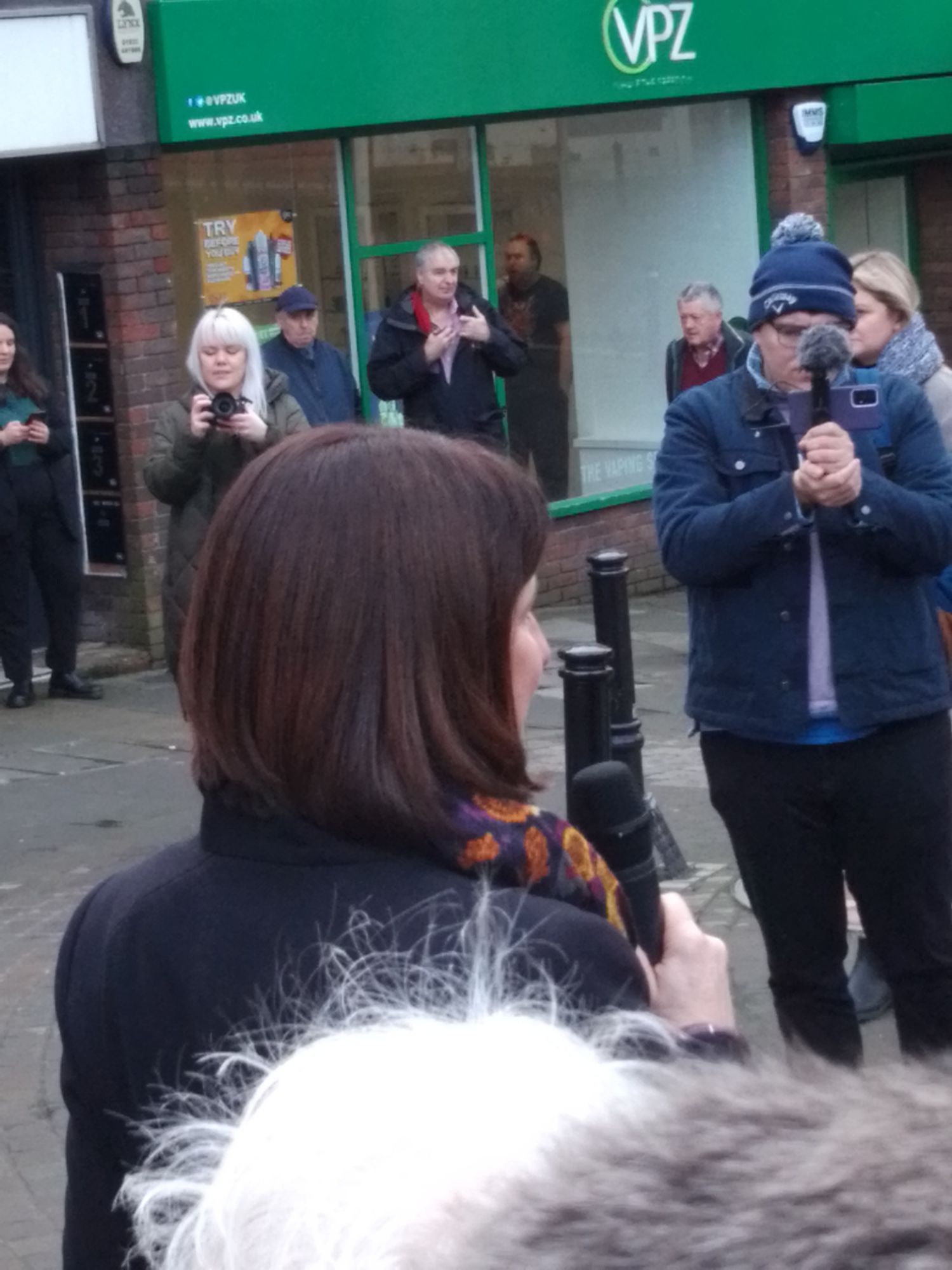Anti-trans campaigning trans woman Debbie Hayton was in The Spectator again, sucking up to JK Rowling, claiming Rowling is one of the most important people to roll back “gender ideology”. What she calls “Gender ideology” is the idea that trans people exist, and when they are included in society as their true selves everyone benefits. Hayton expressed the opinion that Rowling starting a twitter pile-on on a blameless football manager might put off anyone who wasn’t her social media follower. Hayton was trying to be helpful. Hayton wants to persuade people who are not obsessively transmisic that trans inclusion is wrong, and thought she might help Rowling do so. Even Elon Musk has suggested Rowling tweet about something else, once in a while.
Julie Bindel objected. She thought Hayton should be even more slavish to the anti-trans campaigners, and posted a diatribe under a picture of a woman holding an axe over a bound man. She says Hayton gives her the creeps. Of course Hayton does: Bindel is a transphobe. Bindel calls Hayton a misogynist, even an “ultimate transactivist”, not meaning that as a compliment. Bindel’s rage and self-pity show she really needs an editor for her substack, but the comments there are predictably foul.
As Hayton is rejected by the haters, having burned her boats with any trans person who does not hate trans people, her wife wrote an article about their life together. Hayton has said she traumatised her wife. The wife, a Church of England lay reader, appears not to want to leave Hayton. The piece reeks of self-martyrdom. They are not having sex. When their son called himself “cisgender” Stephanie was “horrified”. She could not bear Debbie being hormonal, saying she was like a teenage girl, “unmanageable”. The thought that a partner should be “managed” repels me.
Stephanie opposes all care for trans people. A counsellor suggested she could help Debbie shop for clothes, but she objected stridently: the counsellor had no business “impos[ing] demands on existing relationships and people”.
Stephanie asked Debbie what being “a woman born in a man’s body” meant. Debbie could not answer. If Stephanie ever tried to understand, that seems as far as they got. Instead, she tolerated. Stephanie has not moved on from her original ignorance, which is by now wilful: she writes, in the present tense, “I rarely wear make-up; but this does not make me a ‘man’.” Of course not; but being trans makes Debbie a woman.
They don’t seem to have much of a relationship. Stephanie does not find Debbie attractive, and says this in the first paragraph, which Debbie, masochistically, publishes on her blog. Stephanie is glad that colleagues have other things to discuss than trans issues.
Debbie started social transition in December 2012, and within five months Stephanie “had endured enough”. And yet she stayed. They went to LGBT events where she judged the trans women were not acting like women, then they went to Charing Cross to see the psychiatrist. Stephanie looked round disapprovingly at “very tall people with large hands, short skirts”.
Stephanie has had to draw deeply on her faith, she says, and the sense of God’s purpose, even if she has resisted that. Initially, Debbie had reasonable, trans-inclusive opinions, such as that when to transition was up to her.
Could Stephanie have made Debbie a self-hating anti-trans campaigner? Debbie’s delight in being published in rags like The Spectator, and the love-bombing by such as Bindel, now so cruelly withdrawn, may have had a part in it. But Stephanie’s sniffing distaste, for twelve years, and Debbie’s slavish acceptance of it, bamboozle me. Their relationship must be hell for them both. They deserve each other.












